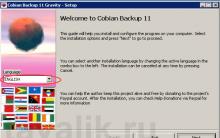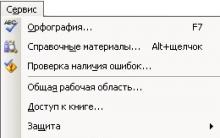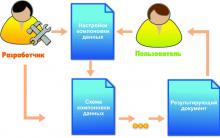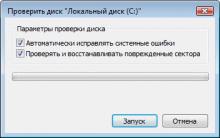В BIOS идем в раздел: Дополнительно > Конфигурация встроенных устройств, и для пункта Hyper M.2X16 выбираем Enabled.

Save & Exit (F10).

Запускаем приложение Acronis Disk Director 12 и видим два не инициализированных раздельных накопителя.

Если для пункта Hyper M.2X16 выбрать Disabled.

То будет виден только один накопитель (который установлен в первом слоту):

Идем в управление дисками:

И видим, что накопители у нас не проиницилизированы, поэтому пока из них нельзя создать зеркальный том.

Чтобы диспетчер локальных дисков мог получить к нему доступ, надо инициализировать диск.
Выбираем диски. Отмечаем: Таблица с GUID разделов (GPT - GUID Partition Table). OK.

Смотрим на полученный результат:

Нажимаем правую кнопку мыши на диске и выбираем из выпадающего списка: Создать чередующийся том.

Появится мастер создания чередующихся томов. Далее >

Вы можете выбрать диск и установить размер диска для этого тома.

В разделе Доступны: выбираем накопитель и нажимаем на кнопку: Добавить >

Чтобы упростить доступ, вы можете назначить тому букву диска или путь к диску.

Форматирование тома. Для сохранения данных на этом томе, его необходимо предварительно отформатировать.

Мастер успешно завершил работу. Нажимаем на кнопку: Готово.

Управление дисками. Выбранная операция преобразует выбранные базовые диски в динамические диски. После преобразования этих дисков в динамические вы не сможете загружать ранее установленные версии Windows с любых томов на этих дисках (за исключением текущего тома загрузки). Вы действительно хотите продолжить? Да.

RAID0 (H:). Выберите, что требуется сделать для съемных носителей.

Так как накопители немного разного объема, то "лишняя" часть одного из них, будет не распределена.

Локальный диск RAID0 (H:).
Тестируем последовательные скорости с помощью утилиты CrystalDiskMark 6.0.0 x64
. Размер файла: 1Гбайт. 5 проходов.
3317/1920 Мб/с против одиночного Samsung 960 EVO (MZ-V6E250BW) с 3264/1577 Мб/с.

AJA System Performance Tester 2.1
. Данное приложение позволяет протестировать производительность любого диска или системы хранения данных, подключенной к компьютеру, и увериться в её достаточности для поддержки того или иного видеоформата.
При работе с 16Гб файлом 1080p 10-бит YUV получаем последовательные скорости чтения/записи: 4232 и 1819 Мб/с. Против: 2557 и 846 Мб/с у одиночного Samsung 960 EVO (MZ-V6E250BW).

График записи ровный и без провалов.

Чтобы разобрать RAID массив, идем в управление дисками, выбираем том из массива, нажимаем правую кнопку мыши на нем и выбираем пункт Удалить том... из выпадающего списка.

Удалить чередующийся том. Удаление тома уничтожает все данные на этом томе. Перед удалением заархивируйте все данные, которые вы хотите сохранить. Хотите продолжить? Да.

Возвращаемся к тому с чего начали.

Although M.2 SSDs come in similar form factors, only an M.2 SATA drive with an NGFF B key will operate with this device. M.2 drives that are PCIe or have a different key position are not compatible with this device.
This device can adapt an M.2 SATA drive to standard SATA connections, which is not possible for a PCIe based M.2 drive. The key type refers to the connector type on the M.2 SATA drive. B key can be M.2 PCIe x2 or SATA, so it is important that you check the specifications of the drive to see if it supports SATA.
This device supports the ATA Packet Interface (ATAPI) protocol. ATAPI is required for optical drives, including CD-ROM drives, DVD-ROM drives, and Blu-ray players. Because this device supports ATAPI, optical drives are also supported.
Note: Not all сайт devices support each of the RAID modes described below. For more information on the RAID modes that your device supports, refer to the manual or the сайт product page.
Redundant Array of Independent Disks (RAID) is a virtual disk technology that combines multiple physical drives into one unit. RAID can create redundancy, improve performance, or do both.
RAID should not be considered a replacement for backing up your data. If critical data is going onto a RAID array, it should be backed up to another physical drive or logical set of drives.
The following are terms that are normally used in connection with RAID:
- Striping: data is split between multiple disks.
- Mirroring: data is mirrored between multiple disks.
- Parity: also referred to as a checksum. Parity is a calculated value used to mathematically rebuild data.
Different RAID levels exist for different application requirements.
Refer to the following table for the list of RAID modes offered by some сайт products:
| RAID mode | Description | Operation | Advantages | Disadvantages | Recovery |
| RAID 0 | Striped disks | Data is split evenly between two or more disks. | Large size and the fastest speed. | No redundancy. | If one or more drives fails, this results in array failure. |
| RAID 1 | Mirrored disks | Two or more drives have identical data on them. | A single drive failure will not result in data loss. | Speed and size is limited by the slowest and smallest disk. | |
| RAID 3 | Striped set with dedicated parity | Data is split evenly between two or more disks, plus a dedicated drive for parity storage. | High speeds for sequential read/write operations. | Poor performance for multiple simultaneous instructions. | |
| RAID 5 | Striped disks with distributed parity | Data is split evenly between three or more disks. Parity is split between disks. | Large size, fast speed, and redundancy. | The total array size is reduced by parity. | A |
| RAID 10 | 1+0; Striped set of Mirrored Subset | Four or more drives are made into two mirrors that are striped. | Larger size and higher speed than RAID-1, and more redundancy than RAID-0. | No parity. | |
| JBOD | Just a Bunch Of Disks | Any number of drives are accessed independently by the operating system. | Software RAID modes can be used. | Hardware RAID may have better performance. | N/A |
| Big | Spanning or Concatenation | Data is written on one drive until it is full, and then the next drive(s) until it or they are full. | Creates a very large and simple array. | N/A | |
| Clone | RAID 1 + Spare |
Two drives have identical data, plus one drive is used for rebuilding in case of a primary array failure. |
Seamless operation when one drive fails in a RAID-1 array. | Spare drive is not accessible to the user. | Only one drive is needed for recovery. |
Installation
Before you install the device, make sure that your operating system is current (for example, the most recent service pack is installed).
- Download the latest drivers from the сайт website at . The part number and product ID are on the product packaging.
Note: Windows usually saves the files to the Downloads folder that is associated with your user account (for example, C:\Users\your_name \Downloads).
- After the download is complete, right-click the zip folder that you downloaded, click Extract All , and complete the instructions.
- In the list of extracted files, right-click the Setup.exe file and click Run as Administrator .
Note : If the Run as Administrator option is not available, you might be attempting to run the installer from within the zipped file. Extract the files using the instructions in step 2.
- Complete the instructions to install the device drivers, and restart your computer when prompted to.
Your computer will automatically complete the driver installation and your device should be ready to use.
How to
To confirm that Windows detects your expansion card, complete the following:
- Press the Windows key+R , type devmgmt.msc , and press Enter .
- In Device Manager , under the appropriate heading, confirm that your expansion card is listed and that there isn"t an exclamation mark next to it. For example, a USB controller card would be under Universal Serial Bus controllers .
Technical Specifications tab for your product.
To confirm that the Mac OS detects your expansion card, complete the following:
- Click the Apple icon.
- Click About This Mac .
- Click More Info or System Report .
- Under the appropriate heading, confirm that your expansion card is listed and that there isn"t an error. For example, a network card would be under Ethernet Cards .
Your expansion card is listed according to the name of the chipset. To determine the name of the chipset of your expansion card, navigate to and look on the Technical Specifications tab for your product.
In order to use a hard drive plugged into a hard drive controller card as your operating system, you need to install the operating system onto the hard drive while it is plugged into the expansion card. To do this, complete the following:
Note: Not all hard drive controller cards have drivers that allow you to install the operating system onto the hard drive. All of the hard drive controllers that display this FAQ include this capability.
Before you begin, consult the documentation that came with the motherboard to make sure that the motherboard or BIOS supports booting from an expansion card.
- Back up any data on the hard drive.
- Make a copy of the drivers from the website onto a floppy disc, CD, DVD, or USB flash drive. The drivers that you download depends on the operating system that you want to install.
- Install the hard drive controller card onto your motherboard.
- Plug the hard drive into the controller card.
- Turn on your computer and open the operating system install wizard.
- Before you select the hard drive that you want to install the operating system onto, select the option to install third-party drivers.
- Point the driver installer to the floppy disc, CD, DVD, or USB flash drive.
- Install the drivers.
- Select the hard drive on the hard drive controller card as the location where you want to install the operating system.
- Complete the on-screen instructions to finish installing the operating system.
Troubleshooting
When you troubleshoot issues with a hard drive controller card, there are some quick tests that you can complete to rule out potential problems. You can test to make sure that the following components are working correctly and are not the source of the issue:
-
Hard drive controller card
IDE, SATA, and eSATA cables
To test your setup components, try the following:
Use the IDE, SATA, or eSATA cable, hard drive, and hard drive controller card in another setup to see if the problem is with the components or the setup.
Use a different IDE, SATA, or eSATA cable, hard drive, and hard drive controller card in your setup to see if the problem persists. Ideally, you should test a component that you know works in another setup.
When you test your cables, it is recommended that you do the following:
Test each cable individually.
Use short cables when you are testing.
When you test the hard drive and hard drive controller card, it is recommended that you do the following:
To open the Device Manager, press the Windows key + R , type devmgmt.msc , and press Enter . Check the IDE ATA/ATAPI controllers (for IDE) section, or the Storage controllers (for SATA) section.
Do one of the following:
If you do not see the hard drive controller card in Device Manager, refer to the following FAQ: .
If the device is listed with an error, reinstall the drivers by completing the instructions on the website.
If the hard drive is listed with unallocated space, the hard drive needs to be formatted. Right-click unallocated and click New Simple Volume . Follow the on-screen instructions to complete the reformatting.
Note: Formatting a hard drive erases all of the data on it. Make sure that you back up all of your data before you reformat the hard drive.
To check Disk Management , press the Windows key + R , type diskmgmt.msc , and press Enter . Check to see if your hard drive is listed.
If the hard drive is listed as healthy but does not have a drive letter, for example, C:, right-click healthy and click Change Drive Letter and Paths . Click Add , assign a drive letter, and click OK .
Note: A formatted hard drive does not show up in Computer or My Computer until it has a drive letter assigned to it.
In order to rebuild a RAID array, you need to replace a physical drive with an identical drive on the same RAID controller. Although standard RAID levels are generally agreed upon throughout the industry, the implementation varies between manufacturers. RAID arrays are typically not accessible when they are moved to another controller, and data may be unrecoverable if the drives are out of order or have been formatted or accessed by another RAID controller.
If a RAID controller has failed, you should get the exact same model of RAID controller.
Note: If a drive or drives were damaged, it is possible that the RAID array may be permanently unrecoverable.
RAID should not be considered a replacement for backing up your data. If critical data is going onto a RAID array, you should back up the data on another physical drive or logical set of drives.
Rebuild a RAID array
With the following RAID modes, recovery is possible using the same сайт product. Refer to the following table for the appropriate method to use to recover your RAID array.
| RAID mode | Max # of failed drives | Procedure |
| RAID 1 | Only one drive is needed for recovery. |
Determine which drive is operational by using the RAID management utility (if available) or test each drive individually on a different hard drive controller (for example, a hard drive docking station or SATA controller). Replace the failed drive with an identical hard drive. The array will rebuild and is accessible during the rebuilding process. |
| RAID 3 | Single drive failure will rebuild. |
Note: |
| RAID 5 | Single drive failure will rebuild. |
Determine which drive is defective by using the RAID management utility (if available) or with diagnosis LEDs on the controller or enclosure. Replace with an identical hard drive. Note: Do not change the order of the drives. The array may be accessible during the rebuild, but you should let the controller rebuild without interruption so that performance is not compromised. |
| RAID 10 | Only one drive in a mirrored set can fail. |
Determine which drive is defective by using the RAID management utility (if available) or with diagnosis LEDs on the controller or enclosure. Replace with an identical hard drive. Note: Do not change the order of the drives. The array may be accessible during the rebuild, but you should let the controller rebuild without interruption so that performance is not compromised. |
Delock специализируется на решении подобных проблем. Немецкая компания создает многочисленные док-станции, контроллеры и ресиверы, повышающие функциональность компьютеров.
Модель, обозначенная числом 89888, использует интерфейс PCIe X4 и способна управлять четырьмя SSD в формате M.2.
Четыре SSD на одном устройстве
SSD-накопители стали очень популярны . Вряд ли стоит удивляться, потому что своими характеристиками они во многом превосходят классические HDD диски. К тому же, за последнее время стали значительно дешевле.
Чтобы подключить к компьютеру диск SSD в формате M.2, когда у Вас уже нет свободного слота M.2, можно использовать контроллер Delock 89888 . С его помощью вы можете подключить четыре жестких диска с длинами в стандартах: 2280, 2260, 2242 и 2230.
Условием является, чтобы это были диски, использующие шину SATA, поэтому нельзя устанавливать диски, взаимодействующие непосредственно с PCIe.
Быстрее или безопаснее
С помощью контроллера Delock 89888 можно собрать RAID-массив из дисков SSD M.2. Доступны RAID 1 и RAID 0, а также 10. Такое решение может быть идеальным, например, для создателей цифрового контента, ожидающих высокой производительности от подсистемы памяти и безопасности созданных данных.
На выставке Computex компания Asus показала устройство Hyper M.2 x16 Card, которое заодно можно назвать и новинкой Intel. Hyper M.2 x16 Card - это плата расширения с интерфейсом PCIe, которая располагает четырьмя разъёмами для подключения SSD формата M.2.
Она предназначена для создания массивов RAID. Что же касается новинки Intel, суть в том, что данное устройство поддерживает технологию Intel VROC (Virtual RAID on CPU) - программную реализацию массивов RAID. Это новая технология и пока она будет поддерживаться исключительно процессорами Skylake-X (о поддержке Kaby Lake-X пока данных нет) и чипсетами X299. Более того, с Hyper M.2 x16 Card можно использовать лишь твердотельные накопители компании Intel.


У устройства есть интересная особенность. По умолчанию при установке накопителей активируется режим RAID 0. Можно использовать и другие, но за это придётся доплатить отдельно. Причём во избежание попыток взлома ПО, компания Intel (или Asus) реализовала данную особенность физически. Для того, чтобы использовать режим RAID 1 либо RAID 5 необходимо приобрести специальный ключ и вставить его в соответствующий разъём SATA на системной плате. За ключ для RAID 1, по слухам, придётся отдать около 85-100 долларов, а за ключ для реализации RAID 5 попросят уже примерно 250-300 долларов.

Из остального можно отметить наличие вентилятора, который можно принудительно отключить, и четырёх светодиодов, оповещающих о работе SSD.











Обзор Samsung Galaxy A7 (2017): не боится воды и экономии Стоит ли покупать samsung a7
Делаем бэкап прошивки на андроиде
Как настроить файл подкачки?
Установка режима совместимости в Windows
Резервное копирование и восстановление драйверов Windows